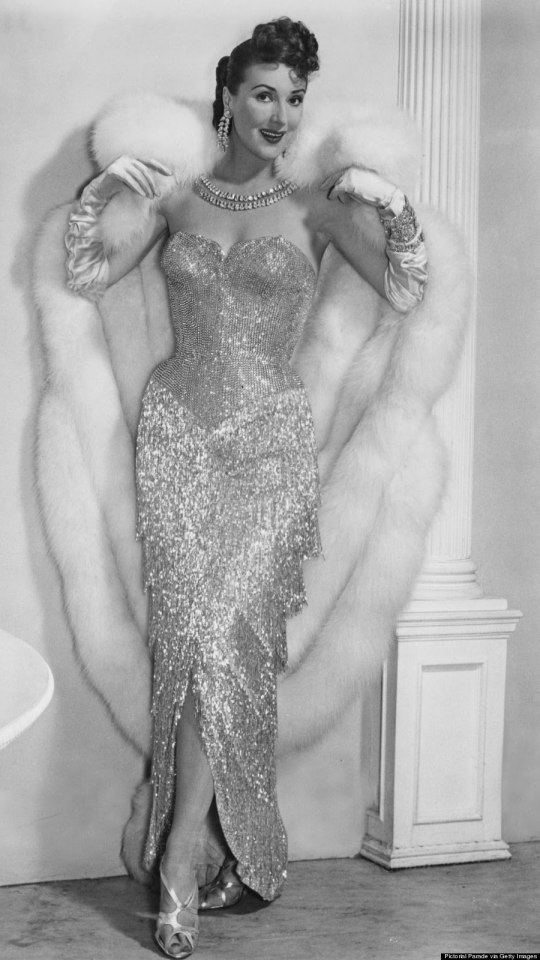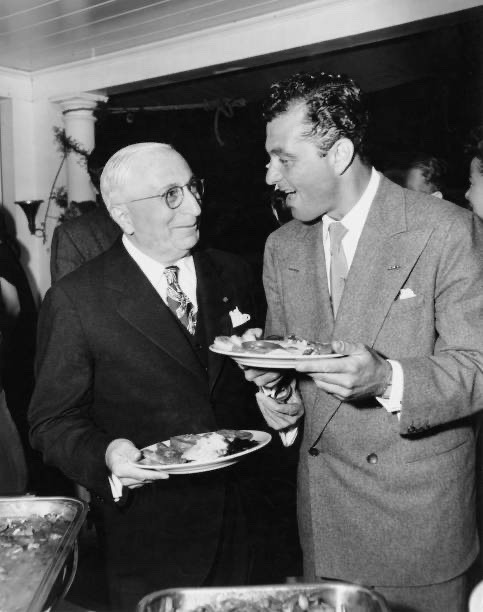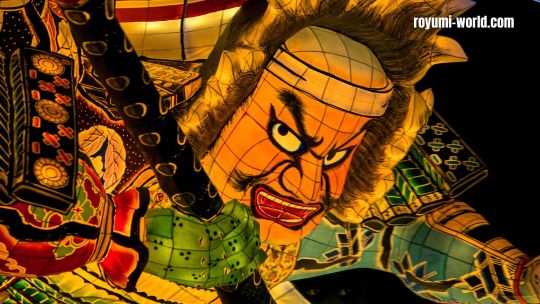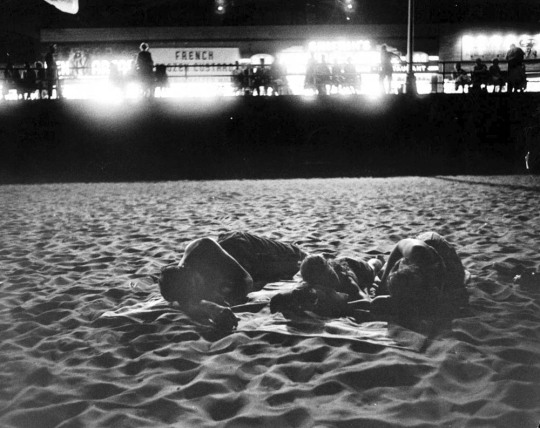#pictorial parade
Text

#gypsy rose lee#burlesque dancer#burlesque artist#burlesque#author#actress#playwright#pictorial parade#1950s#50s glamour#50s glamor#black and white photography
4 notes
·
View notes
Text

Gaynor Bell
Born in the United Kingdom, either in 1966 or 1967, Gaynor featured regularly in UK and US men's magazines from around 1985. She featured in Men Only, Electric Blue, the US, French and UK editions of Club, Model Directory, Genesis, Swank, Fox, Parade and many others. Most of her work was solo, but she also appeared with other models, some in softcore lesbian pictorials, mostly for US men's magazines. She also appeared in various videos from Electric Blue and Fiona Cooper in the early 1990's as well appearances on the Italian strip game show Colpo Grosso. Gaynor seemed to have stopped modeling around 1993.
10 notes
·
View notes
Photo

Olivia de Havilland by the sea in 1935.
Pictorial Parade/Archive Photos / Getty Images
279 notes
·
View notes
Text

Louis B. Mayer and Tony Martin enjoying the buffet table at a party in 1950. (Pictorial Parade)
12 notes
·
View notes
Text
Q&A with John Bidwell
The author of The Declaration in Script and Print discusses Independence Day, the Declaration of Independence as an iconic document, and more.

Why do we celebrate independence on July 4th even though Congress voted for independence on July 2nd?
The date we have chosen for Independence Day depends on a document. By all rights we should be celebrating the day when the United States became an independent nation—July 2, 1776—when the Continental Congress adopted Richard Henry Lee’s resolution “that these United Colonies are, and of right ought to be, free and independent States.” John Adams predicted that July 2nd would be the national anniversary, a day marked with parades, bonfires, bell ringing, gun salutes, and “illuminations” of houses with candles in the windows. Adams was wrong, however, because he did not foresee the emotional impact of the official announcement, a broadside printed two days later with the title In Congress, July 4, 1776. A Declaration by the Representatives of the United States of America, in General Congress Assembled. The date in the title is one reason why July 4th prevailed over July 2nd. But above all Americans cherished the text, an eloquent expression of fundamental rights based on principles of liberty, justice, and equality. Historians have traced its origins, its changing reputation, and its influence at home and abroad. I too have noted how it has been variously interpreted, but mainly I wish to show how it has been visualized, how it appeared in engravings, lithographs, and letterpress broadsides during the nineteenth century. I identify about two hundred prints and broadsides in The Declaration in Script and Print, expensive engravings suitable for framing as well as cheap stereotype keepsakes aimed at the bottom of the market. Starting with an innovative advertising campaign in 1816, I describe the merchandising tactics of artists, printers, and publishers who played on a surge of patriotic sentiment to promote their wares. In the same spirit, Penn State University Press has selected July 4th to be the release date for my book.
What was it that made the manuscript Declaration more inspiring to Americans than the printed version issued on July 4th?
Some delegates were not able to vote for independence on July 4th. A week later they received the necessary authorization, which made it possible for everyone to sign a manuscript version of the Declaration, “fairly engrossed on parchment.” They signed it on August 2, 1776, and reaffirmed the unity of the United States by changing the title to: “In Congress, July 4, 1776. The Unanimous Declaration of the Thirteen United States of America.” The text is more or less the same as the broadside edition, but written out by hand it seems more tangible, personal, and distinctive. Beneath it are fifty-six autographs of Founding Fathers, each an act of patriotism representing courage, conviction, and a shared commitment to a righteous cause. Awestruck Americans could pick out the names of Adams, Jefferson, Franklin, and other heroes of the Revolution. While giving the first edition its due, they have looked at the August 2nd manuscript as a more meaningful and evocative expression of their history and ideals. Printmakers catered to public demand by publishing reproductions of the manuscript although often only the signatures were reproduced in facsimile. Some believed that the manuscript had been signed on July 4th, wishful thinking all the better to convey the drama of the moment.
How and when did the Declaration become an iconic document?
In 1816 the Philadelphia newspaper publisher John Binns issued subscription proposals for an engraving of the Declaration. He was the first to tell Americans about the iconic value of that document, for which he designed a pictorial scheme that would define a new genre of patriotic prints—the signatures in facsimile, the text adorned with portraits, allegorical vignettes, and a massive cordon of state seals. Other printmakers adapted his designs, some imitated them in pirated editions, and two opportunists reprinted the original edition on the occasion of the Centennial. While Binns’s print was in press, an itinerant writing master, Benjamin Owen Tyler, produced a calligraphic version with the signatures in facsimile but without illustrations. That too inspired a series of imitations and adaptations. Binns accused Tyler of plagiarizing his prospectus, and Tyler fought back by impugning his opponent’s patriotism in a newspaper war that publicized both of these trend-setting prints. More than seventy per cent of the Declaration prints and broadsides published during the nineteenth century were derived in whole or part, directly or indirectly, from these archetypal images.
Why would Americans prefer facsimiles of the Declaration to the original manuscript?
Perhaps it wasn’t so much a matter of preference as practicality. Americans have been able to view the original in Washington where it has been displayed at various times in the Patent Office, the State Department, the Library of Congress, and the National Archives. Huge crowds came to see it in Independence Hall during the Centennial. Many were disappointed to discover that it was in poor condition, the text illegible in places and the signatures almost entirely effaced. Printmakers helped to popularize the Declaration, but their invasive replicating techniques are partly to blame for ruining it. Secretary of State John Quincy Adams realized that the manuscript was in danger and commissioned a scrupulously accurate reproduction of the text and signatures, printed in a limited edition dated “July 4th. 1823.” Adams and his successors strictly controlled the distribution of the official facsimile until the end of the century. Meanwhile the condition of the manuscript went from bad to worse. In 1894 complaints about its continuing deterioration prompted government officials to take it down and lock it in a safe, where they kept it out of sight for thirty years. During that time the State Department facsimile was the only option for those who wanted to visualize the founding document. To this day we rely on it to show what the manuscript must have looked like when it was signed by the Founding Fathers: that is what we see in souvenirs, textbook illustrations, and the New York Times every year on July 4th, an iconic image of an essential text.
The Declaration in Script and Print: A Visual History of America’s Founding Document is now available from Penn State University Press. Learn more and order the book here: https://www.psupress.org/books/titles/978-0-271-09730-5.html. Take 30% off with discount code NR24.
#The Declaration of Independence#Independence Day#Independence#US History#History#19th Century#Literary Studies#American History#America#American#Books#Print#Script#PSU Press
3 notes
·
View notes
Text

Betsy Rawls in 1952. She was the first four-time Women’s Open champion, winning in 1951, 1953, 1957 and 1960 / Pictorial Parade/Getty Images
She who won eight major golf championships, including four United States Women’s Opens, in the first two decades of the L.P.G.A. Tour, and as an executive and tournament director helped propel the arrival of the women’s pro circuit as a big-money attraction
6 notes
·
View notes
Photo

Aomori, Ancient History and Nature
Aomori is the northernmost prefecture of Japan’s main island, Honshu, in the region called Tohoku. A gem relatively unexplored by tourists but offering dreamy natural landscapes and virgin forests, the country’s most delicious apples, pictorial art in the rice fields, higher quality sake drinks, gourmet seafood, unique festivals, historical and natural treasures of humanity, and winter sports for the more active.
Several of Aomori ‘s attractions are located in its capital city of the same name, the most famous being the Nebuta Matsuri , a festival that takes place from August 2 to 7 each year . In this popular summer festival, huge colorful “floating” lamps are paraded through the streets and displayed with great pride. Each of these lamps takes a year to build, and they typically feature themes from Japanese mythology or even pop culture.
And if it is not possible for us to visit Aomori during August, it is possible to enjoy the spirit of this festival and admire elements of it, in the Nebuta Warasse museum, located in the civic center of the city. This artistic space displays various lamps used in previous festivals, as well as performances by musicians and dancers involved in the festival on weekends and holidays.
Honoring its impeccable sea and wonderful marine fauna, the Furukawa and Augu markets offer its visitors the highest quality marine products, frequently exported with the highest gourmet index. And if you prefer flavors closer to the earth, you can’t stop trying the delicious Aomori apples, famous throughout Japan.
Continue Reading >>>
4 notes
·
View notes
Text
Wunderwörter: A Pictorial Parade of Playful German Phrases
Embark on a linguistic treasure hunt, we dive into the whimsical depths of the German language, a trove of sounds that can tickle the funny bone with their precise yet often elaborate construction.
Embarking on a linguistic treasure hunt, we dive into the whimsical depths of the German language, a trove of sounds that can tickle the funny bone with their precise yet often elaborate construction. German, with its penchant for concatenating words to create new, sometimes bafflingly long terms, offers a delightful playground for those of us seeking a chuckle or a moment of light-hearted…

View On WordPress
#AI Art#Backpfeifengesicht#Calorie comfort#Dreikasehoch#Fernweh#Futterneid#German#German words#Handschuhschneeballwerfer#Kummerspeck#Schnapsidee#Tongue twister#Torschlusspanik#visualizations#Wordplay#zungenbrecher
0 notes
Text
The New Age of Nuclear Terror: Revelation 8
Falling out.Source: Pictorial Parade/Getty Images
Hiroshima, ‘Oppenheimer’ and the New Age of Nuclear Terror
North Korea is testing more missiles, Iran is rushing for a bomb, India and Pakistan are renewing the arms race — things are getting as scary as the Cold War.
By Max Hastings
August 5, 2023 at 10:00 PM MDT
Suddenly, on this 78th anniversary of the dropping of “Little Boy” on Hiroshima…

View On WordPress
0 notes
Text
City of Apes
For the ball-eyed man conditioned our taste for bad luck, and what we lacked was pushed on he that mattered not. Our thoughts enslaved us, but good manners demanded of us a ransom that for a plate of steamed rice beef stew we sided with she that squeezed times’ sweetness from us, and paraded seniors amongst us for pictorial fanfare. The Crippling Dance that brought us to the city auctioned the…

View On WordPress
0 notes
Link
https://public.fotki.com/pikliz/very_old_pictures/us_occupation_of_haiti/
0 notes
Photo

BRAVO FOR TINA
That’s what father Jean-Pierre Aumont said when at 17 she married a man of 40
For a few hours recently, the little French village of Banon in the Alps took on the appearance of a movie set, with practically every villager turning out to see two of France’s best known motion-picture and stage personalities. the action was filmed - but as a news event.
the event was the marriage of 17-year-old Marie Christine (Tina) Aumont, daughter of French actor Jean-Pierre Aumont, to 40-year-old christian Marquand, a top star of the “Nouvelle Vague” (New Wave), whose screen carrer has included roles opposite such as notables as Brigitte Bardot and Jeanne Moureau. Tina’s mother was the late movie actress, Maria Montez, who died in 1951.
it was the second time in less than a year in French acting circles that a teenage girl had been married to a man more than twice her age. The previous wedding was that of New Wave actor Robert Hossein, 37, whose bride was 15.
For Christian Marquand, and old friend of Jean-Pierre Aumont, marriage to Tina was the fulfilment of a promise he had made to himself years ago. when Tina was just a young child, Marquand told her father he planned to marry her as soon as she was old enough.
Tina, who says her judgement is as good as now as it will be when she is 25, announced her marriage plans to her father, appearing in the New York production of Tovarich, in a transatlantic telephone call. Aumont simply replied: “Eh bien! Bravo ma chérie!” (Well, bravo my dear!).
Photo shows Tina Aumont on holiday in the Balearic Islands off the coast of Spain, before her marriage, Tina had a tennis lesson every day “so I will be able to play with Christian”. Her husband Christian Marquand, is a top French movie star, and an old friend of her famous actor-father, Jean-Pierre Aumont. - Photo by Pictorial Parade.
Photo and caption from The Vancouver, 25th January 1964. 🌟Very special thanks to Priscilla and to my sister from @shannendoherty-fans :)🌟
#Tina Aumont#1964 tina Christian Marquand#The Vancouver#1964 The Vancouver#Jean Pierre Aumont#Tovarich#1963 Tovarich#Pictorial Parade#Christian Marquand#collaboration#1964#1964 Tina#25 January 1964 The Vancouver
13 notes
·
View notes
Photo

miss janet leigh, circa 1950s.
#miss janet leigh#janet leigh#circa 1950s#fashion#pictorial parade#publicity photo#mgm#classic hollywood#digital restoration#so pretty i could cry
12 notes
·
View notes
Photo

American model and actress Suzy Parker (1932-2003) as she looks to her right, Photo by Pictorial Parade, 1959.
#Suzy Parker#1959#pictorial parade#american model#american actress#super model#vintage#vintage portraits#1950s#50s#50s super model#1950s super model#1950s portrait#50s portrait#cecilia ann renee parker#american female models#american models#Actresses from San Antonio#Actresses from New Jersey#highland park new jersey#Fashion Model#1950s fashion#50s fashion
115 notes
·
View notes
Photo

Too hot to sleep indoors, so they stretched out on the sand. Coney Island Beach, 1955.
Photo: Pictorial Parade via Getty Images/Buzzfeed
388 notes
·
View notes
Text


A Fine Pictorial Sterling and Gold Parade Saddle
A finely executed saddle set by San Diego artists, Kahle & Son. An ornate, decorative and very impressive sterling silver and gold full parade ensemble with matching bridle and martingale. The two-tone brown elegant floral tooling features a hand carved standing horse on each fender. The silver is heavy gauge with domed square and diamond conchos, silver cantle with rope edge, silver gullet and horn, plus gold horse heads and the initials "JPW" in gold on the rear of the cantle. Each piece of silver has fanciful extra flair to the edges. The 15” seat is partially quilted and there is the original, attached black and white wool corona. . The original cinch with matching tooled leather included. The large 19” eagle bill tapaderos have the extra touch of two-tone wraps around the conchos. The martingale has full coverage silver and an attached throat strap, the bridle is complete with 3 piece silver face drop and a full overlaid sterling half breed bit.
Old West Events
86 notes
·
View notes